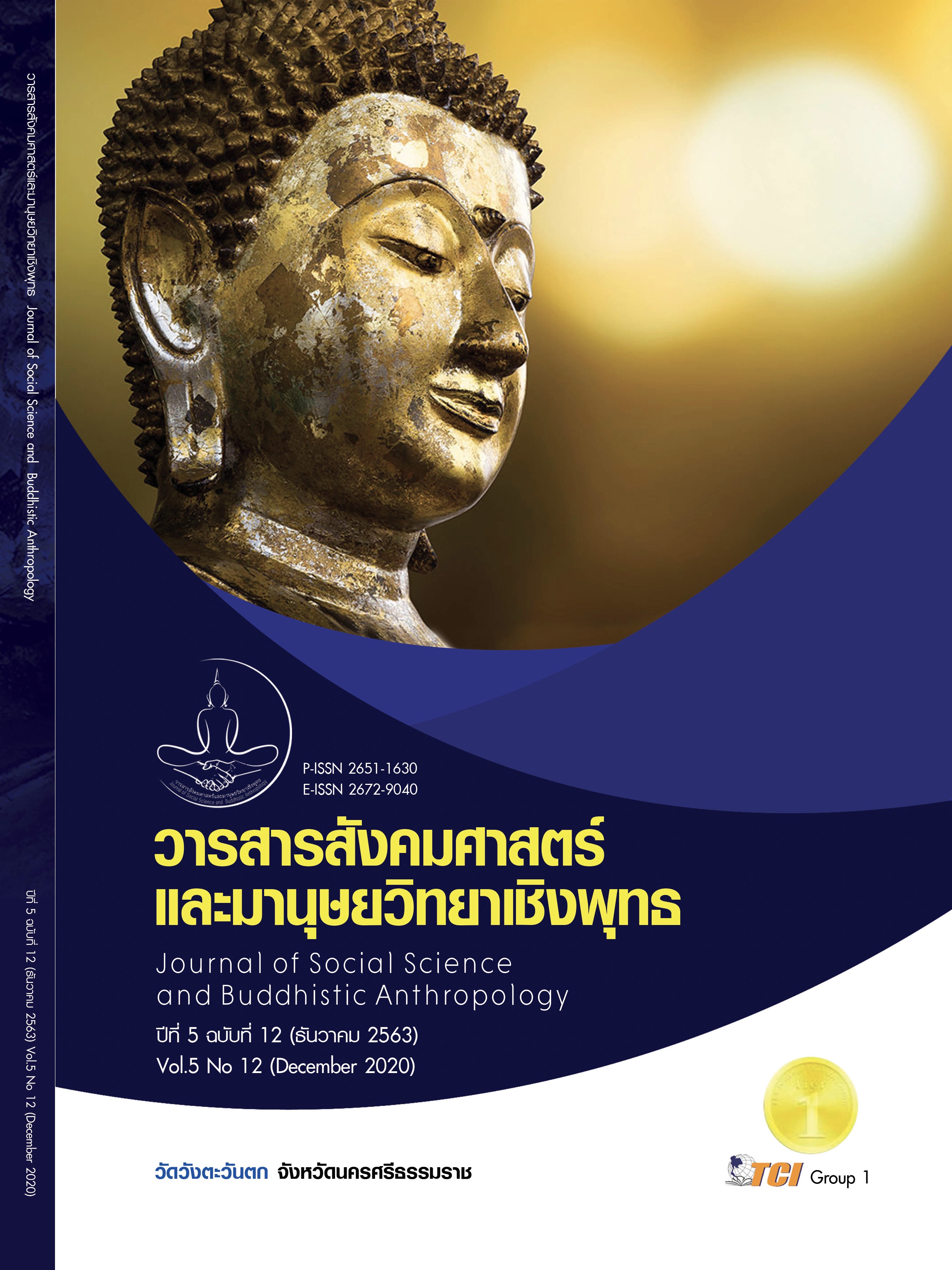MITSUBISHI MOTORS MARKETING MANAGEMENT MODEL
Keywords:
Management Model, Marketing, Earnings Increase, Mitsubishi MotorsAbstract
The objectives of this research article were to 1) to study the condition of marketing management to increase the performance of Mitsubishi vehicles. 2) to develop a marketing management model in order to increase the performance of Mitsubishi vehicles. 3) to assess the feasibility and usefulness of a marketing management model to increase Mitsubishi vehicle turnover. The sample group was Mitsubishi dealerships executives. Obtained from the sample sizing tables for 144 people Crazy and Morgan. and Mitsubishi car buyers Which does not know the exact population method by using the W.G.Cochran formula for the sample of 400 people, the pattern was assessed by a group of 17 experts. Questionnaire Tool the statistics used for data analysis were frequency distribution, percentage, mean and standard deviation. The results of the research were as follows: 1) The condition of marketing management to increase the performance of Mitsubishi vehicles. The overall picture is at a high level. 2) Marketing management models to increase Mitsubishi vehicle performance, namely: 2.1) Increase Market Share as follows: 2.1.1) Visualization of showrooms and service centers 2.1.2) Increase in number and expansion of networks 2.1.3) Customer relationship management 2.1.4) Quality improvement of products or services 2.1.5) Human resource development 2.2) Change in management strategy as follows: 2.2.1) Emphasize the cost-effective use 2.2.2) Development of a parking guide system 2.2.3) Design quality 2.3 Products that take into account the benefits that consumers as follows: 2.3.1) Increasing number of car models 2.3.2) Presenting advanced technology 2.3.3) Social responsibility participation and environment 3) feasibility model assessment Usefulness The overall picture is at a high level.
References
เกียรติพงษ์ อุดมธนะธีระ. (2563). Marketing กลยุทธ์การตลาด 4Ps และส่วนผสมทางการตลาด (Marketing Mix). เรียกใช้เมื่อ 10 มกราคม 2563 จาก www.iok2u.com
นฤมล บุญแต่ง. (2563). การแบ่งภูมิภาคทางภูมิศาสตร์. เรียกใช้เมื่อ 17 มกราคม 2563 จาก https://www.royin.go.th/?knowledges
ปรียาพร จิระไพทูรย์. (2557). การวางแผนกลยุทธ์ทางการตลาดเพื่อเพิ่มยอดขายของร้านจีระพาณิชย์อำเภอชุมแพ จังหวัดขอนแก่น. ใน วิทยานิพนธ์บริหารธุรกิจมหาบัณฑิต สาขาวิชาบริหารธุรกิจ. วิทยาลัยบัณฑิตศึกษาการจัดการ มหาวิทยาลัยขอนแก่น.
มิตซูบิชิ มอเตอร์ส. (2563). พันธกิจ ความมุ่งมั่นของ มิตซูบิชิ มอเตอร์ส. เรียกใช้เมื่อ 17 มกราคม 2563 จาก https://site.mitsubishi-motors.co.th/th/about-us /mission
สุปราณี คงนิรันดรสุข. (2563). MMC สิทธิผล ฝ่าพายุภาษี. เรียกใช้เมื่อ 10 มกราคม 2563 จาก http://info.gotomanager.com/news/printnews.aspx?id=7201
อัจจิมา เศรษฐบุตร และสายสวรรค์ วัฒนพานิช. (2547). การบริหารการตลาด. กรุงเทพมหานคร: สำนักพิมพ์มหาวิทยาลัยธรรมศาสตร์.
อุกฤษฎ์ ตั้งสืบกุล. (2562). จะซื้อรถยนต์ 1 คันผู้บริโภคคำนึงถึงอะไรบ้าง? เรียกใช้เมื่อ 4 พฤศจิกายน 2562 จาก https://www.mintedacademy.com/thai-car-buyer-behavior-2019/
Brandbuffet. (2563). เข้าใจพฤติกรรมผู้บริโภคยุค “ไร้ความภักดีต่อแบรนด์” พร้อม 5 วิธี เมื่อลูกค้า Disloyalty. เรียกใช้เมื่อ 10 มกราคม 2563 จาก https://www. brandbuffet.in.th/2019/08/brand-disloyalty-is-new-normal-in-brand/
Cronbach, Lee Joseph. (1970). Essentials of Psychological Testing. (3rded). New York: Harper and Row.
Eisner, E. (1976). Educational Connoisseurship and Criticism: Their Form and Functions in Education Evaluation. Journal of Aesthetic Education, 39(2), 192-193.
Krejcie, R. V. & Morgan, D. W. (1970). Determining Sample Size for Research Activities. Educational and Psychological Measurement., 30(3), 607-610.
Lawshe, C. H. (1975). A Quantitative Approach to Content Validity. Personnel Psychology, 28(4), 563-575.
Marketeeronline. (2563). รถใหม่ แบรนด์ใหม่ อินไซด์ใหม่ผู้บริโภค. เรียกใช้เมื่อ 7 เมษายน 2563 จาก https://marketeeronline.co/archives/88722








